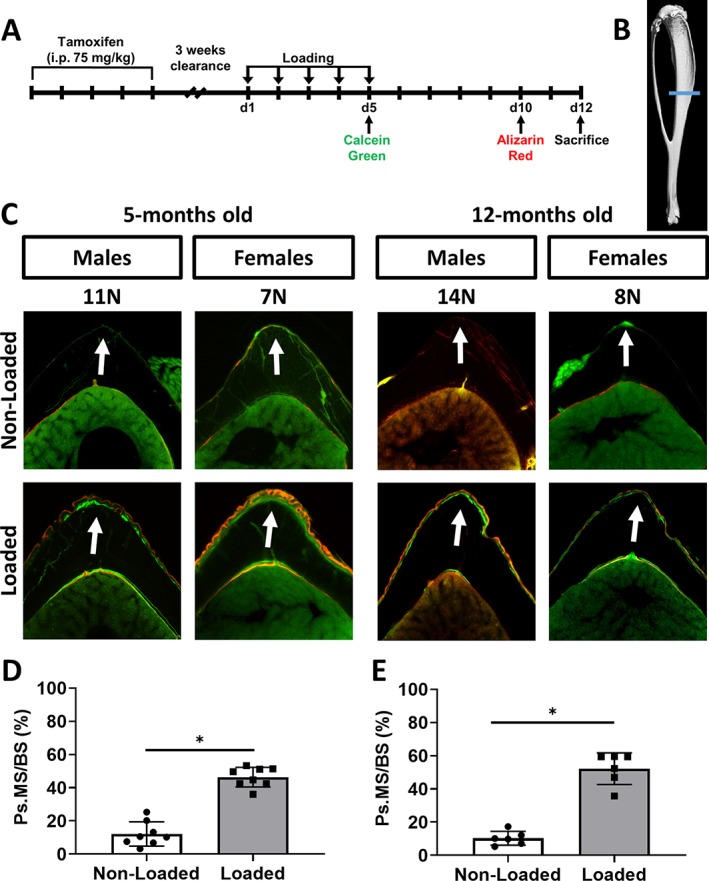Figure 1.

Mechanical loading‐induced bone formation occurs in tibias of 5‐ and 12‐month‐old iOsx‐Ai9 mice. (A) Cre activity was induced by five consecutive doses of tamoxifen (75 mg/kg) followed by a 3‐week clearance. Tibias were then loaded for 5 consecutive days; mineralizing surfaces were labeled with calcein and Alizarin on days 5 and 10, respectively. Mice were euthanized on day 12 for histological evaluation. (B) Transverse sections were cut 5‐mm proximal to the distal tibial–fibular junction. (C) Representative transverse sections of fluorochrome‐labeled nonloaded and loaded tibias illustrating an increase in periosteal (Ps) bone on the peak compressive surface (arrows). Analysis of the periosteal surface revealed that loaded tibias from (D) 5‐ and (E) 12‐month‐old mice had an increase in periosteal mineralizing surface (Ps.MS/BS). Data shown as mean ± SD. * Signifies p < .05 by Student's t test [5‐month‐old mice: n = 8 (males = 5, females = 3); 12‐month‐old mice: n = 6 (males = 3, females = 3)].
